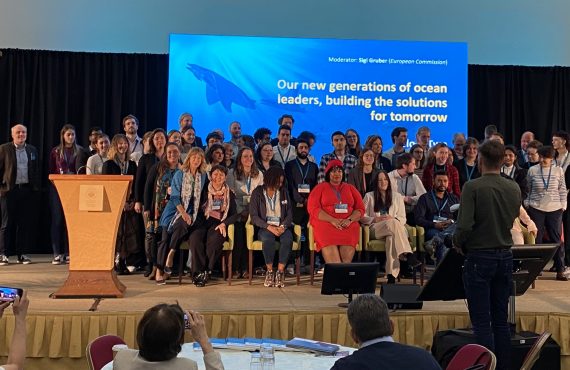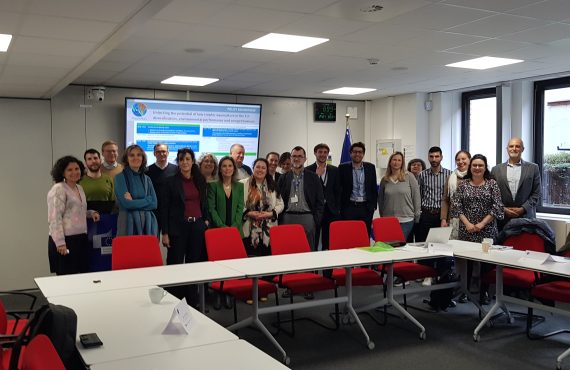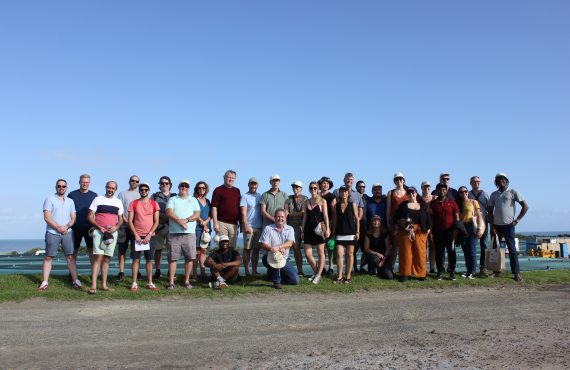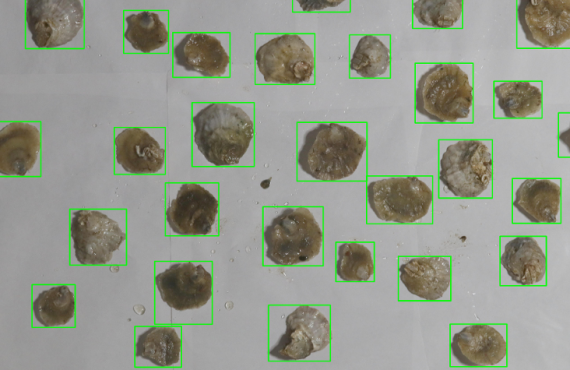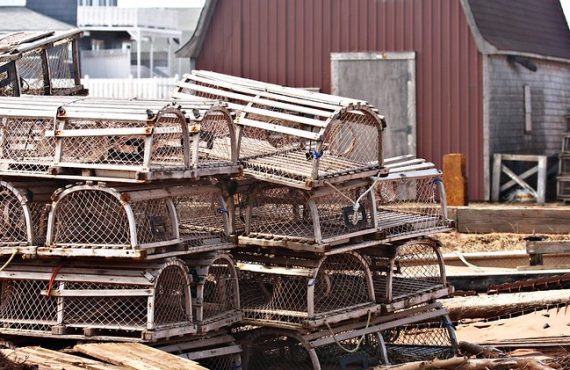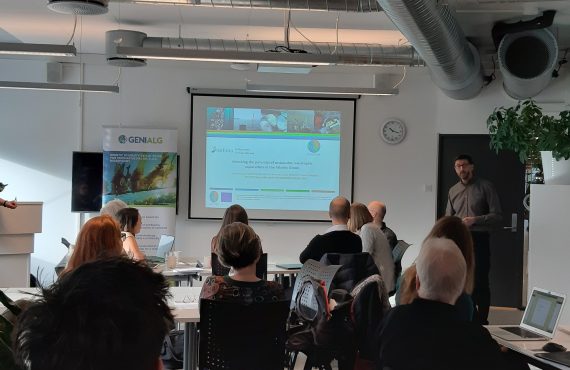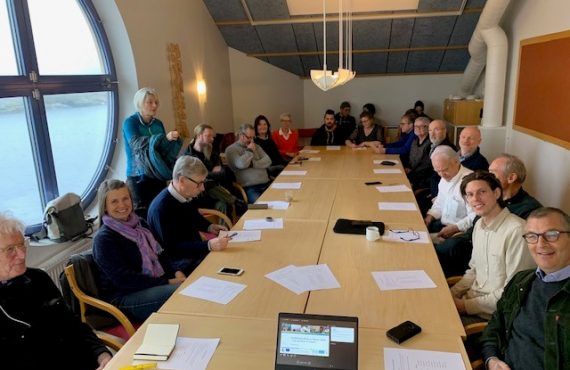IMTA site in in Sørvágsfjørður, Faroe Islands – Photos: Mayleen Schlund
By Mayleen Schlund, student at Leibniz University Hannover
Integrated-Multi-Trophic-Aquaculture (IMTA) has been implemented in aquaculture systems as a sustainable ecological approach to limit aquacultural impacts on aquatic environments. The integration of macroalgae, such as Saccharina latissima into IMTA can lead to bioremediation by taking nutrients from the seawater and using it as a basis for biomass growth.
Saccharina latissima is a species of brown algae that grows across cool temperate rocky coasts of Europe, Asia and America. Seaweeds already became more commercial in aquaculture, also in the Faroe Islands. Therefore, 6 months of S. latissima growth, from April to September 2020, were monitored in a commercial IMTA site and a reference site in Sørvágsfjørður, Faroe Islands.
How do environmental values differ between the sites?
Environmental properties form the basis for the growth and development of seaweeds. For the determination of the conditions at both study sites, the environmental parameters of temperature, salinity, seawater currents and nutrients were analysed.
Temperature and salinity results showed slightly higher values but still indicated a good growth environment for the macroalgae. Average seawater current differences that occurred between both locations seemed to be insignificant for macroalgae growth but can be a factor of nutrient distribution in the fjord.
A seawater sampling campaign was conducted at both sites from February to September 2020 using a Seabird CTD, an oceanography instrument to measure seawater parameters e.g., temperature, salinity, pressure or to collect water samples. For nitrate, ammonium, silicate and phosphate analysis, water samples were taken at two- and four-meter depths. All nutrient concentrations and other environmental values in Sørvágsfjørður were determined to be a marginal factor for growth differences of Saccharina latissima.

Does the growth of Saccharina latissima vary at the two locations?
In April 2020, two ropes with seeded Saccharina latissima were deployed at the IMTA site and the reference site in Sørvágsfjørður. S. latissima strings were coiled around thick ropes of 50 meters length and were situated between the surface and approximately four-meter depth. The seaweeds were sampled approximately once a month between April and September 2020 and the samples were measured regarding their weigh, blade length and width of the blade.
During the seaweed growth, the snail species Lacuna vincta consumed almost the entire stock of Saccharina latissima on the rope at the IMTA site. Only the stripes and holdfasts remained.
The habitat of the snail is on algae, usually on rocky shores and among other species, and Saccharina latissima belongs to their main food sources. The snail was first observed in June 2020 and all growth results of Saccharina latissima a showed data loss in September 2020 as consequence of the snail.
In 2020, S. latissima showed an increase in weight and width (blade) at both locations during the summer months. However, the reference site showed higher weight development and already in June, the weight of the measured individuals at the IMTA site decreased.
Since May 2020, the seaweeds at the reference site doubled in biomass weight per meter rope every month. The maximum in biomass of both sites was shown in August with 17,800 grams at the reference site and 9,977 grams at the IMTA site.

Is Saccharina latissima a good choice for IMTA?
The aim of this study was to investigate the growth differences of S. latissima when cultivated at an IMTA site in comparison to a natural reference site. The fjord (Sørvágsfjørður) offered ideal growth conditions for Saccharina latissima and environmental differences were not crucial for growth differences.
Comparable study results also showed similar biomass yields up to 16 kilograms per meter. However, differences in growth between the sites were recorded later in the year, depending on the species Lacuna vincta.
Despite the impact of the snail in this study, Saccharina latissima was recommended for cultivation in IMTA in the Faroe Islands as under normal circumstances there were good yields results. However, it would be useful to consider additional, larger and relevant data sets to identify further influences and the origin of Lacuna vincta for future research.
Check the full recording of the webinar
“What about macroalgae? Comparison of sugar kelp growth in the Faroe Islands” was presented by Mayleen Schlund and recorded on May 26th 2022:
A deeper insight:
– Learn more on Mayleen´s exchange at: Learning about Kelp in the Faroe Islands
– Interested in the next webinar? Check out what June 23rd and register by clicking on the green button:








